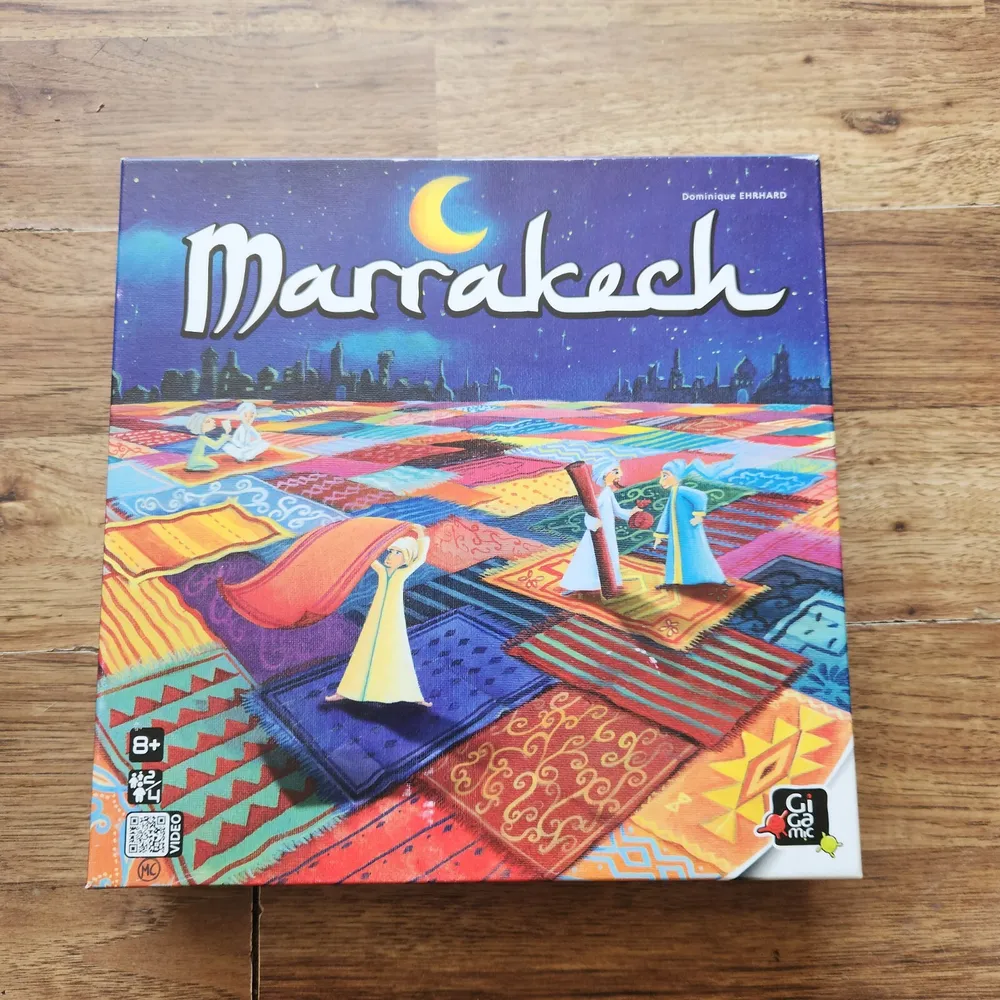Marrakech (2007)
Marrakech
Marrakech is a board game designed by Dominique Ehrhard in which players are competing carpet traders in the city of Marrakech. It was first published in 2007. The game has won several awards, including the 2008 French As d’Or award and the Austrian Österreichischer Spielepreis award. It was also one of the recipients of the 2009 Mensa Select awards and was nominated for the 2008 German Spiel des Jahres award and the 2009 Japan Boardgame Prize U-more Award.
Why is Marrakech Popular?
Marrakech is a popular game due to its simple rules and accessible gameplay, making it easy for children to learn and enjoy. The game also has a tactical element that can be enjoyed by adults. The game’s components are visually appealing, and the game’s theme of carpet trading in Marrakech adds to its charm.
Game Components of Marrakech
How To Setup Marrakech
To set up the game, lay out the 7×7 grid board within reach of all players. Place Assam, the trader piece, in the center square. Each player selects a color and collects all the carpets of that color. Give each player 30 Dirhams. Determine the starting player, who receives the six-sided die.
Gameplay Mechanics and Game Objective
Mechanics
Game Objective
Player Experience
Marrakech is praised for its easy-to-learn rules, making it accessible to families and children. However, the game also offers enough strategy to keep experienced players engaged. The game starts off relatively straightforward, with players avoiding each other’s carpets, but it becomes more tense as the board fills up. Players must balance the need to earn Dirhams with the goal of keeping their carpets exposed for end-game scoring.
Pros
Cons
Personal Thoughts on Marrakech
Marrakech is ideal for families and casual gamers looking for a quick, fun, and visually appealing game. While it may lack the depth to keep hardcore strategists entertained in the long term, it serves perfectly as a filler game or an introduction to more complex board games. Its unique mechanics and beautiful components make it a standout in its category.
We are supported by our audience. When you purchase through links on our site, we may earn an affiliate commission, at no extra cost for you. Learn more.

